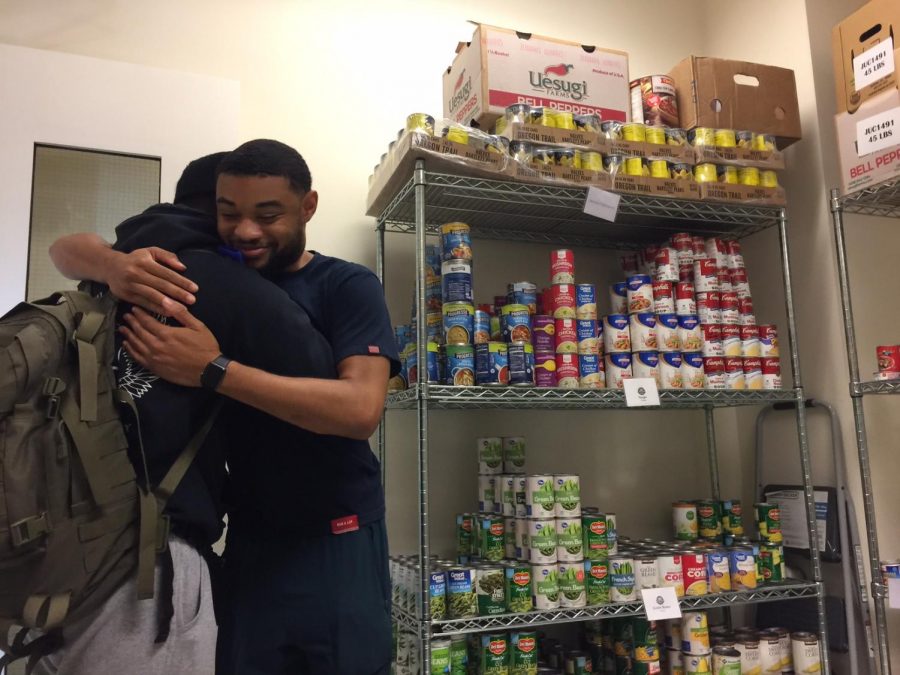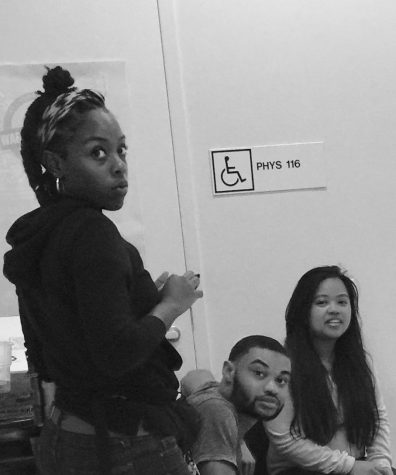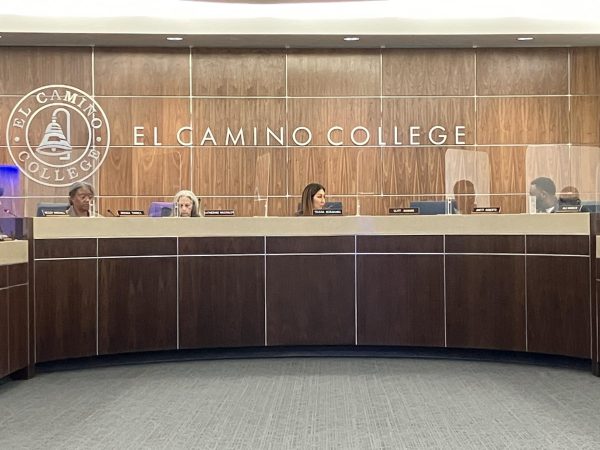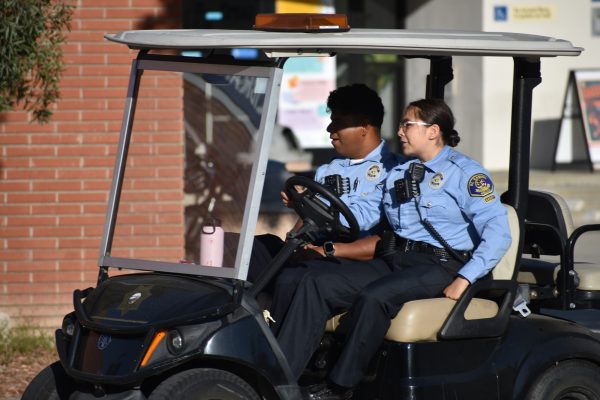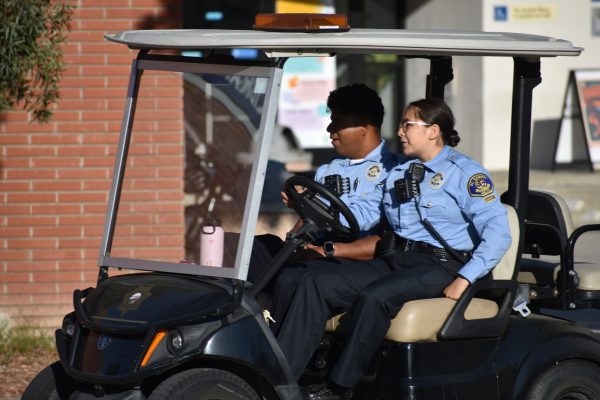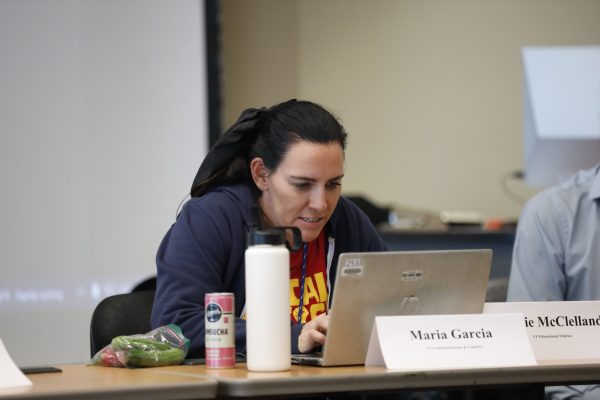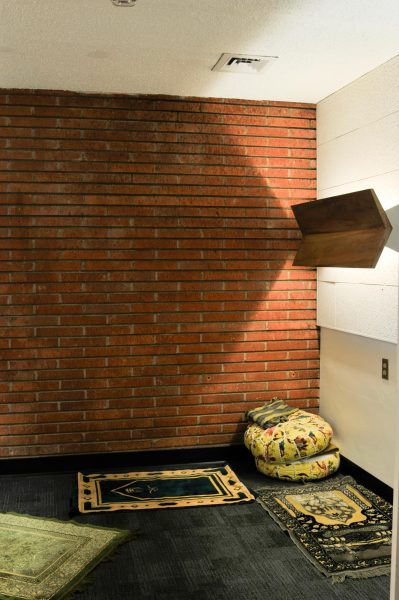13 percent of EC students are homeless
Sebastian Alejandro Araque Vera,19, Chemistry major, and Isaiah Robinson, 20, Computer Science major and assistant at the Warrior Food Pantry, thankful the day before Thanksgiving.
It’s 7 in the morning. Semajae Brown has got to be in a class by 8. She takes three buses and a train ride from Watts to El Camino College. Once again, she’s left home without breakfast.
Most days with little food at home and just a few bucks in her purse, she manages to get through an eight-hour day in school, without starving by ordering a meal from the dollar menu at the McDonald’s near campus, when she can afford it.
Once seated in the cosmetology class, the lecture started, she can’t focus. A nagging thought won’t leave her alone. She’s worried, that she may come up short the $200 her mother is counting on for the rent.
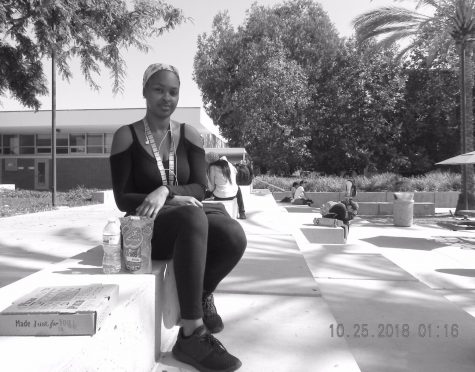
Latasha Jones, 24, Cosmetology Major, having lunch outside Cafe Camino during her class break. “I’m at school from 8 to 7, so I don’t get to go out and make the money, so I don’t get to eat in the morning, through the day sometimes, um, I have to sacrifice for gas, sacrifice for my phone bill, you know…,” said Jones.
Brown lives with her 55-year-old mother who lost her job driving a bus for the MTA after being involved in a serious traffic accident on the job; the injuries she sustained prevented her from ever returning to work.
To make things worse, the landlord recently slapped her family with a $400 rent hike that skyrocketed their previous rate from $1,200 to $1,600 for a two-bedroom apartment in Watts Ca.
Four additional family members live there too; two nephews, Angel, 3, Jordan, 5, a niece, Jamya, 17, and a 27-year-old female cousin, for whom the Brown residence serves as a safe haven from the abuses they suffered in their own homes.
One thing Brown understands is this; that her experiences as a student at EC are not unique, but reflect the realities that community college students in California and other states live, as the food and housing insecure.
Brown herself, would like to make enough money to “get away from it all,” but more important than that, she would like to inspire students like herself who strive through school facing material hardships to never give up.
It’s not easy though. The high cost of living and the affordable housing crunch exacerbated an already difficult situation for most, not just Brown, who faces similar challenges.
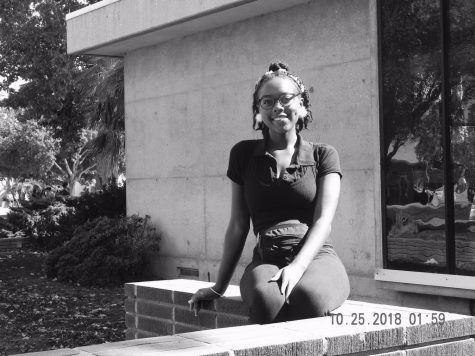
“We live in a world where everyone is pretending. Everybody here is probably going through something, but they’ll try and pretend that they’re not…I know that there’s people who are going through way worse,” said Brown.
This year, researchers from Temple University along with the Wisconsin HOPE Lab, a group of social scientists, released its third largest national survey “Still Hungry and Homeless in College” measuring basic needs security among 43,000 students at the university and community college level.
Up to 42 percent of community college students reported being food insecure, 46 percent experienced housing insecurity, and 12 percent reported being homeless sometime during the year. However, students also ran into “different spells of trouble” intersecting these categories, the study revealed.
El Camino College also released its annual Student Campus Climate Survey this semester. Informed by previous EC surveys and studies performed by various other entities like the Wisconsin HOPE Lab, the survey measured housing/food security among EC students.
“Out of 2,231 students that were sampled, 1,633 answered the questionnaire. During the past 12 months 39 percent of EC students experienced housing insecurity, 13 percent experienced homelessness, and 33 percent said they’d lived on low to very low food security.”
“And, so, that’s the whole thing about education. These students are distracted because they’re not thriving. They’re trying to survive,” said Anthony Hernandez, one of the study’s authors. “Surviving versus enlightenment.”
Marginalized students are disproportionately affected and may suffer higher risks of depression, unemployment, poor health, lower grades, longer work hours, and higher levels of stress; the signs point towards a major public health risk that can undercut student academic performance, Wisconsin HOPE Lab explains.
As the Homeless liaison for EC, Sheranda Barksdale helps identify students who may be homeless or may be at risk of being homeless, through the Financial Aid office’s database system, in order to help steer them to support services on campus.
“I’m happy people are finally having this conversation, that yes, we do have students…facing food insecurities, housing insecurities…Yes, we do have students thriving on campus, but yet, sleeping in their cars,” Barksdale said.
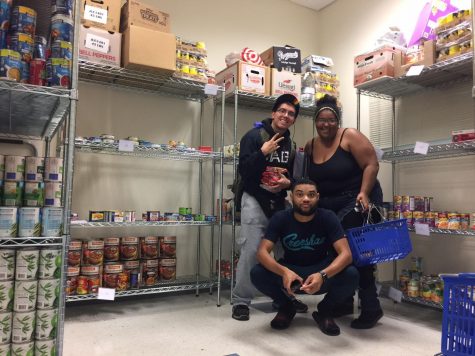
At El Camino, support services for students take many shapes, like the Warrior Food Pantry established last year, that provides both food and toiletries to students who are enrolled in the current semester and can provide a student ID.
The EOPS office whose mission statement announces their purpose on campus is to support students facing economic and educational challenges, offers such support in the form of book vouchers, counseling, and EOPS Grants for “continuing EOPS students in good standing.”
“I think that there’s still more students that have not come forward. I think, part of that though, is the lack of knowledge that we are here to assist them,” Barksdale said.
A lot of students often choose to be discreet about their basic needs securities; many fear being labeled or stigmatized by peers at school. Others may simply not know that students support services exists on campus, the Wisconsin HOPE Lab report learned.
“This poses a significant challenge institutions and social services must overcome in order to reach college students, because, you know, a lot of people are ashamed, they’ll hide invisible right in front of you,” Hernandez said.
Other neighboring colleges have also reported similar numbers if not higher than those obtained at EC. LACCD’s results from a previous 2016 report “Survey on Food and Housing Insecurity,” identified Los Angeles Trade Tech and Los Angeles Southwest students as experiencing higher levels of food/housing insecurity.
The food insecurity numbers there were at 62.7 percent. LASC and LATTC had the highest proportion of “food insecure students in the district (76 percent and 75 percent, respectively),” the LACCD survey revealed.
Up to 55 percent of LACCD students surveyed experienced some form of housing insecurity during the previous 12 months, and 18.6 percent had been homeless at irregular intervals during the year. Again, LASC and LATTC had the highest numbers reported.
“In the wake of the report, we’ve instituted a partnership with St. Francis Center hosting a weekly food pantry here on campus. We’ve had a pretty big turn out, but we need more,” said Davis Ysais, Public Relations Officer, for Los Angeles Trade Tech.
The problem nevertheless persists. “We still are facing a pretty difficult situation with our students facing food and housing insecurities,” Ysais said.
Chris Dela Cruz, Student Services Specialist, who oversees the Warrior Food Pantry at EC takes a similar stance, for him, the high cost of living and housing crunch is bigger than the campuses combined can handle. He would like to see more done.
“These are band-aid solutions. A lot of these are systematic and can only change through policy, talking to state senators, local politicians, and federal politicians…there’s a lot more that needs to change,” Dela Cruz said.
Many students find themselves in a catch-22 situation in which working full-time or not working at all amounts to experiencing similar outcomes as far as food and housing are concerned.
Wisconsin HOPE Lab shows at least 82 percent of community college students work full-time or part-time during college; however, students who try to find work often find the process both frustrating and time-consuming, yielding poor results.
The survey also reveals, “community college students who were unemployed but seeking work exhibited rates of food and housing insecurity comparable to students working 40 hours or more per week.”
“It’s not that simple to just go get a job,” Brown said. “People have to stop being so like, oh, ‘well, you didn’t try hard enough.’ When I left high school, I applied for over 150 jobs. One called me back!”
At just 20-years-old, Brown comes across as a pretty self-aware articulate individual. Not surprising for someone who began attending to her own clientele’s hairdressing needs at 13, in order to contribute to her family’s income.
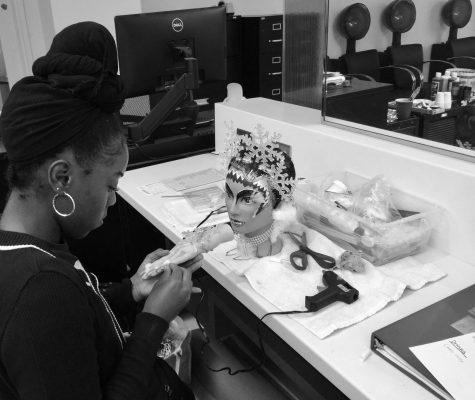
More recently, ever since her mother became unemployed, Brown has done her part to support her family by helping babysit and feed her younger nieces and nephews, taking more clients on between semesters, to helping nurse her mother back to health after the accident.
Learning how to stretch a dollar has become something of a fine art, especially when her past experiences looking for a job proved fruitless.
After finally having secured an interview with Chipotle for a third time, she was told she’d gotten the job. But a week later she received an email from the franchise informing her that the job had gone to someone else instead.
“Like, can you imagine how, that made me feel? That was very discouraging,” Brown said. “The fact that my father owned his own business, that was the only thing that kept me going. Some people don’t have that type of inspiration.”
Financial Aid has often helped alleviate some of the burdens for students, but in recent times the calculated costs for attending community college, although seemingly more affordable than colleges at the Cal State or UC system, still fall short for some.
“We need to provide students with more financial aid. College is more expensive than ever…we think the cost of…estimates are inaccurate. And we think that they paint a picture that is more rosy than it actually is,” Hernandez said.
After three years at El Camino College, Brown is on the cusp of graduating in the Fall-a feat replete with material hardships ranging from poor access to healthy foods, difficulty making rent, transportation, and other issues minority students confront.
Her single-mindedness and determination have allowed her to get this far, but the housing crunch and high cost of living plaguing the sun belt state has by no means left her unscathed.
It’s about 5 o’clock, and Brown is on her first bus heading back home. Today she stood in line for two hours waiting for the pantry to open up because otherwise there may not be enough food left over to choose from.
She’s been lucky in the past to have come away with a 20-pound bag of rice that she likes to mix up with chili, and will also serve her family well.
“…like there’s people that go to school full-time, go to work full-time, and have three kids on their own-single parents-and are making ends meet, so I try not to complain, but at the same time I try not to shut myself up, like, oh no, that’s nothing. No. Everybody goes through something. You have to, like, sit back and recognize, but also visualize your future in order to see better days.”
Update: 4:52 p.m. Monday, Dec. 10. Grammatical errors were corrected for clarity.
Update: 10:54 Friday, Dec. 6. Duplicate text was removed for clarity.
Update: 7:53 a.m. Thursday, Dec. 6, image was added and some grammatical errors were corrected.


